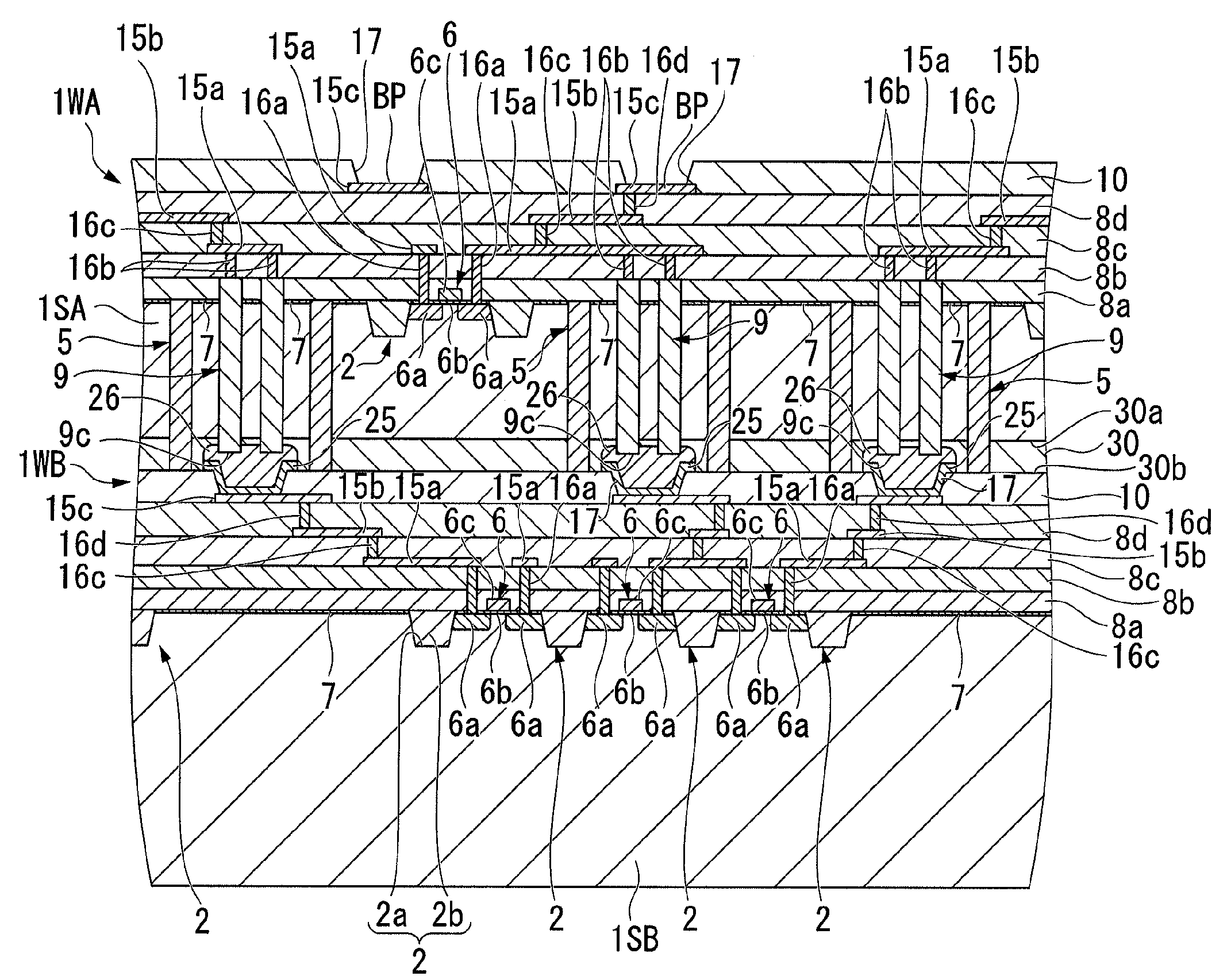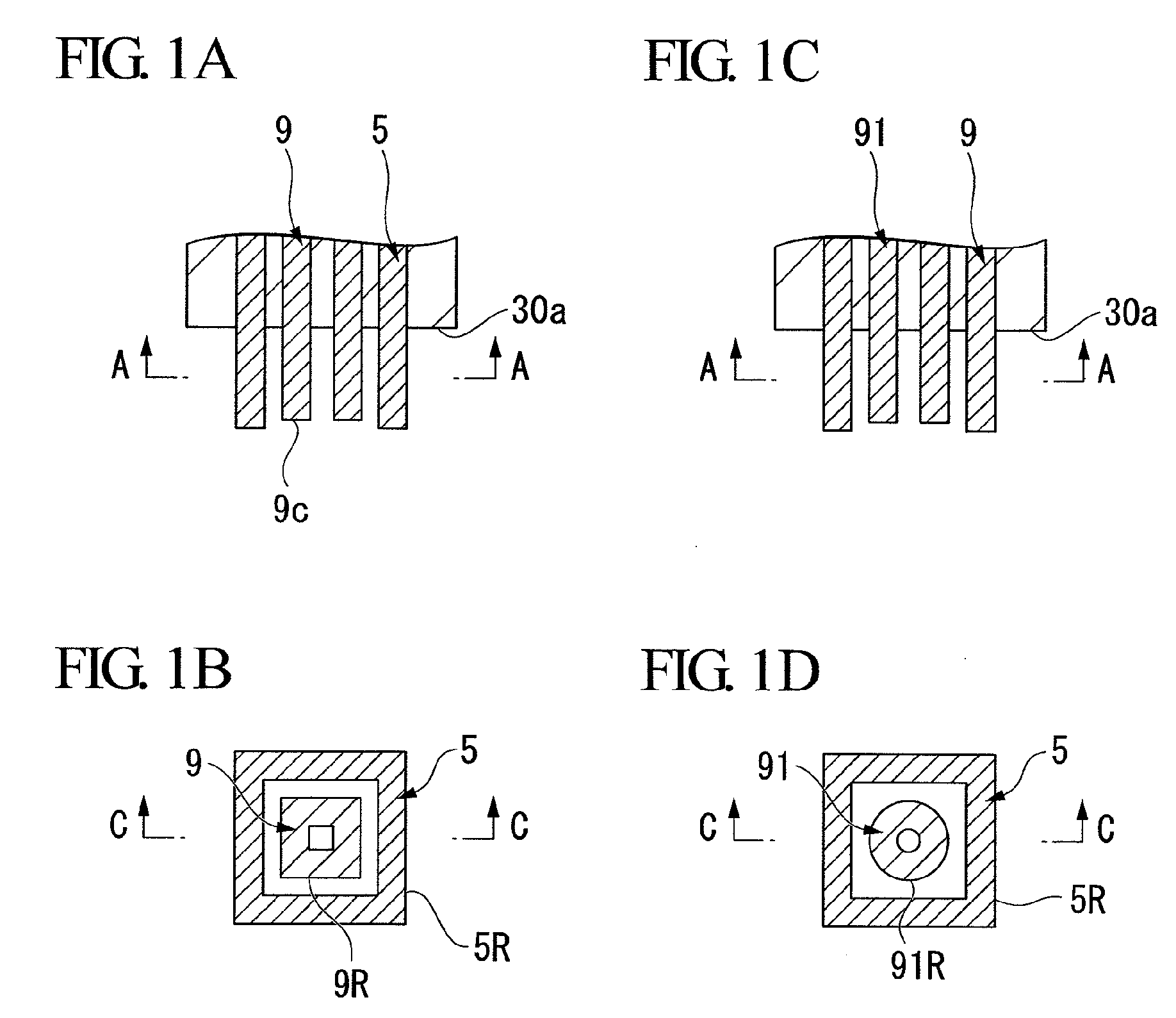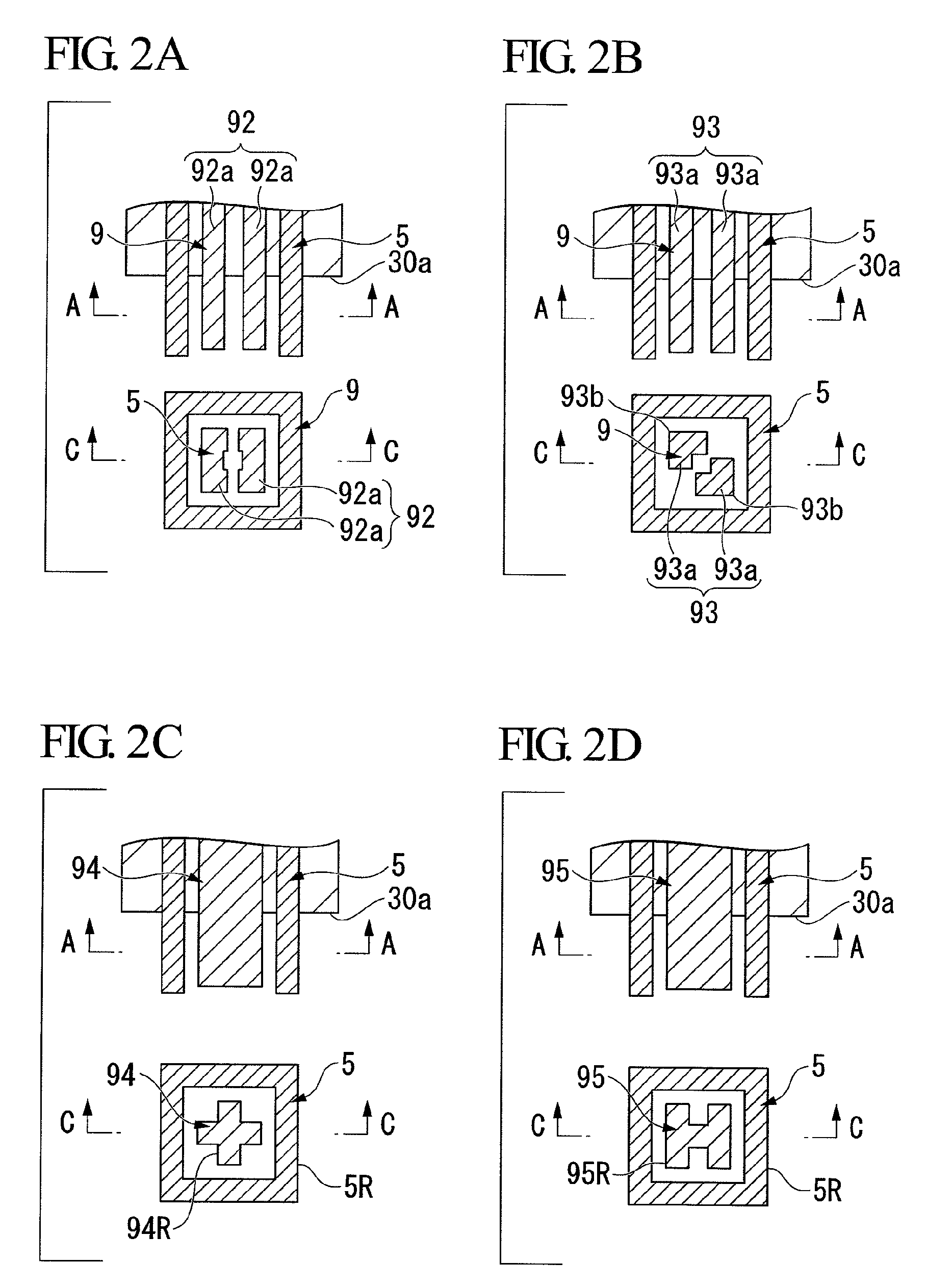Through-hole interconnection structure for semiconductor wafer
a technology of interconnection structure and semiconductor wafer, which is applied in the direction of semiconductor devices, semiconductor/solid-state device details, electrical apparatus, etc., can solve the problems of easy damage of electrical signal connecting section, and achieve the effects of small variation in rigidity to withstand load in directions, high rigidity, and easy damag
- Summary
- Abstract
- Description
- Claims
- Application Information
AI Technical Summary
Benefits of technology
Problems solved by technology
Method used
Image
Examples
first embodiment
[0059]FIGS. 1A to 3 illustrate a through-hole interconnection structure for a semiconductor wafer according to the first embodiment. FIGS. 1A to 1D and 2A to 2F illustrate a configuration of an electrical signal connecting section which is a part of the through-hole interconnection structure according to the present embodiment. FIG. 3 is a cross-sectional view of main part of an exemplary semiconductor device including the through-hole interconnection structure according to the present embodiment.
[0060]As shown in FIG. 3, the semiconductor device according to the present embodiment includes an upper wafer 1WA and a lower wafer 1WB which are bonded together. An electrical signal connecting section which includes a through-hole interconnecting section 9 is provided on a bonding surface 30a of the upper wafer 1WA (i.e., the semiconductor wafer) which faces the lower wafer 1WB. The through-hole interconnecting section 9 is formed to penetrate a substrate 1SA which is a part of the upper...
second embodiment
[0097]FIGS. 5A to 23 illustrate another exemplary through-hole interconnection structure of a semiconductor wafer according to the invention. FIGS. 5A to 6F each illustrate a configuration of an electrical signal connecting section which is a part of the through-hole interconnection structure according to the invention. FIG. 22 is a cross-sectional view of main part of an exemplary semiconductor device which includes a through-hole interconnection structure according to the invention. FIGS. 7 to 21 illustrate a manufacturing process of the semiconductor device shown in FIG. 22. FIG. 23 is a flowchart illustrating the manufacturing process of the semiconductor device shown in FIG. 22. In FIG. 23, reference numeral 301 denotes a manufacturing process of an upper wafer of a first layer, numeral 302 denotes a bonding process of upper and lower wafers of first and second layers, numeral 303 denotes a lower wafer of the second layer, numeral 304 denotes a bonding process of the upper and ...
PUM
 Login to View More
Login to View More Abstract
Description
Claims
Application Information
 Login to View More
Login to View More - R&D
- Intellectual Property
- Life Sciences
- Materials
- Tech Scout
- Unparalleled Data Quality
- Higher Quality Content
- 60% Fewer Hallucinations
Browse by: Latest US Patents, China's latest patents, Technical Efficacy Thesaurus, Application Domain, Technology Topic, Popular Technical Reports.
© 2025 PatSnap. All rights reserved.Legal|Privacy policy|Modern Slavery Act Transparency Statement|Sitemap|About US| Contact US: help@patsnap.com



